What Did A Day In Pharaoh’ s Life Look Like?
A. Sutherland - AncientPages.com - Ancient Egyptians believed that the great gods had created the universe and maintained order; they were also involved in people's everyday lives and survival.
One of the gods was also sent in a mortal form into the Nile Valley to rule as the king who would protect them from warlike and dangerous peoples of the Mediterranean world and look after their well-being.
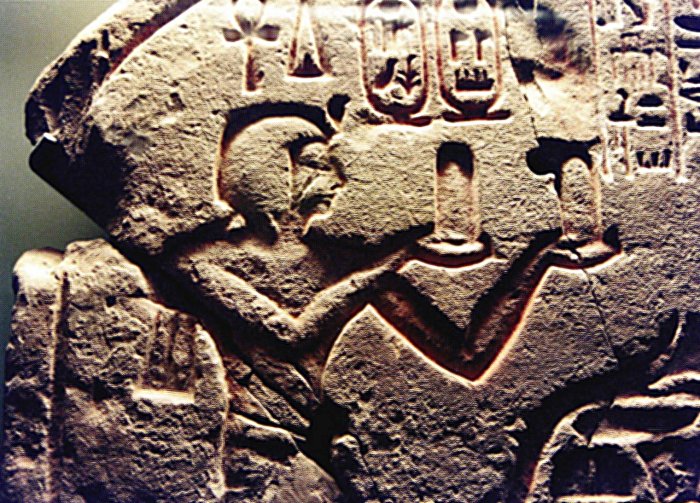 Pharaoh Ramses I making an offering before Osiris, Allard Pierson Museum. source
Pharaoh Ramses I making an offering before Osiris, Allard Pierson Museum. source
For more than 3,000 years, the pharaoh was the principal of everyday life, and he was seen as the gods' representative on Earth and one of the gods. He played a crucial role in the Egyptian cult. As a god and the personification of Egypt, he possessed more power than any other monarch recorded in human history.
However, he was not only a strong ruler but also a high priest, a lawmaker, and a battle commander. The pharaoh was both a political and a religious leader.
Why Did The Egyptians Believe That Pharaoh Was A God?
There were many reasons why the ancient Egyptians treated their ruler as a god. The Nile Valley people lived in a pre-scientific world and knew nothing about natural causes of lightning, thunder, good or bad crops, birth and death, storms, or drought. As it was believed, these 'phenomena' were caused by all-mighty and invisible gods, who were angry, fearsome, occasionally kind, cruel, or seeking vengeance.
The Egyptians believed their pharaoh was a mediator, an essential link between the gods and the people. His role was to sustain the gods to maintain order in the universe, which in Egyptian beliefs was centered on Ma’at (Maat).
Life Before Pharaoh Ascended The Throne And Became A God-Like Ruler
As a boy, his daily life was relatively carefree, and he could play with his companions, then, he was taught horse riding, swimming, and archery.
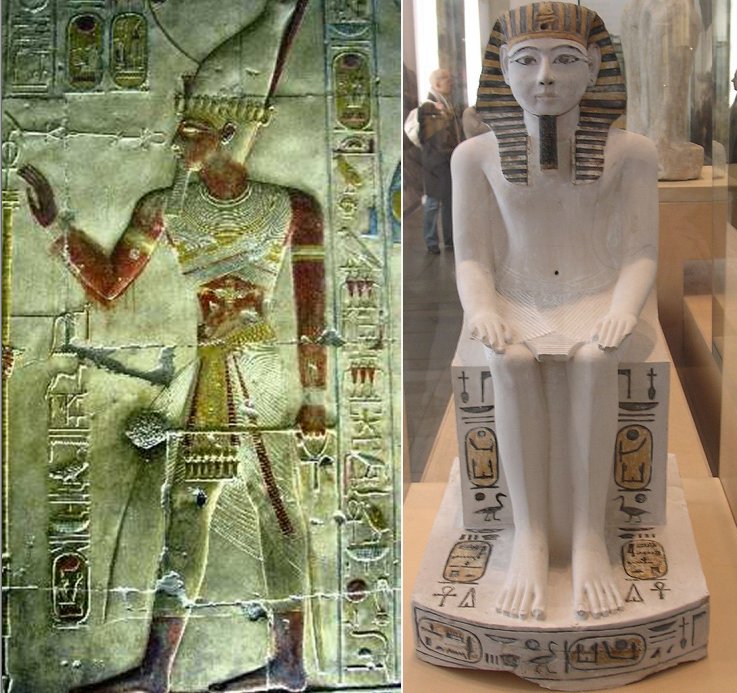 Left: Image of Seti I from his temple in Abydos. source; Right: Pharaoh Amenhotep I of the 18th dynasty of Egypt. source
Left: Image of Seti I from his temple in Abydos. source; Right: Pharaoh Amenhotep I of the 18th dynasty of Egypt. source
As soon as he was old enough, he entered the army to serve military training. Being the son of the current Pharaoh, he would one day inherit the title and confront the obligations to the Land of the Pharaohs as a good leader.
Pharaoh's Day Starts
In his book "Everyday Life in Ancient Egypt," the Welsh American author, Jon Manchip White explains:
“Every morning at dawn, the pharaoh would go into the House of the Morning, one of his private chapels. There he would perform a ritual laving of his limbs. In the way that the sun-god Ra bathed each morning in the primordial ocean of heaven, so pharaoh bathed his body in order to restore the vital force that flowed therefrom upon the Two Lands.
Credit: Adobe Stock - NorLife
Then he was anointed, robed, and invested with the royal insignia by priests wearing the masks of Horus and the ibis-headed god of wisdom, Thoth. Next, he proceeded to the temple, where he officiated at a further ceremony. Its aims were to implant spirituality into the ceremonies that would soon be celebrated in all the other temples throughout the land…”
If the pharaoh did not do so, the empire could lose its divine order - Ma’at (Maat).
Responsibilities And Daily Routines Of The Pharaoh
Pharaoh was the high priest and supreme judge and the only source of law. He pursued foreign policy and decided on war and peace. He headed the army and often personally commanded in battle. Pharaoh's authority was religious, and its undermining was not only a violation of the state order and law but also a misuse of the divine order.
 Colored relief of the kings Thutmose III and Amenhotep II before the gods at Amada Temple in Nubia. source
Colored relief of the kings Thutmose III and Amenhotep II before the gods at Amada Temple in Nubia. source
His daily routines included a great variety of responsibilities and indispensable rituals in accordance with his status as the ruler.
All of these duties were considered essential to both the running of the empire and its spiritual development. Theoretically, the pharaoh was the focus of ritual life and performed all the sacred rituals in the temple, practically, high priests played this role in the ruler's name. However, many depictions show the pharaoh performing the duties.
Daily Meetings, Inspections And Feasts
The next task would be to hold his regular meetings with various officials and guests, including military commanders, ambassadors of foreign countries, and various courtiers. All these individuals usually had much to say, and depending on their ranks, they could speak before the ruler. Then, they could learn his thoughts on the matter.
After lunch, the pharaoh traveled around the city in his chariot. He visited construction sites to monitor progress, as he was personally responsible for approving these building sites.
Occasionally, he had time to relax, for example, by participating in hunting, archery, walking through the royal gardens, or merely spending time with his family.
Towards the end of the day, he had to attend a large feast, in which participated his family members and numerous guests.
Updated on November 3, 2023
Written by – A. Sutherland - AncientPages.com Senior Staff Writer
Copyright © AncientPages.com All rights reserved. This material may not be published, broadcast, rewritten or redistributed in whole or part without the express written permission of AncientPages.com
Expand for referencesReferences:
Silverman David P. Ancient Egypt
Casson L. Life in Ancient Egypt
More From Ancient Pages
-
 A Millennium-Old Gilded Bible Seized In Tokat, Turkey
Archaeology | Oct 28, 2015
A Millennium-Old Gilded Bible Seized In Tokat, Turkey
Archaeology | Oct 28, 2015 -
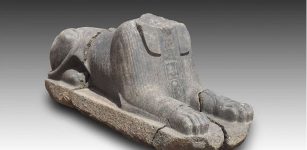 Mini Sphinxes, Huge Baboon Statue And Blocks From Khufu’s Reign Discovered In Heliopolis
Archaeology | Jun 20, 2022
Mini Sphinxes, Huge Baboon Statue And Blocks From Khufu’s Reign Discovered In Heliopolis
Archaeology | Jun 20, 2022 -
 Ancient Mystery Of America’s Missing Metal – Can The Answer Be Found In Ancient Europe?
Ancient Mysteries | May 18, 2018
Ancient Mystery Of America’s Missing Metal – Can The Answer Be Found In Ancient Europe?
Ancient Mysteries | May 18, 2018 -
 Biblical City Of Tarsus: Excavations Reveal Its Secrets From Paul the Apostle’s Times
Archaeology | Jan 4, 2016
Biblical City Of Tarsus: Excavations Reveal Its Secrets From Paul the Apostle’s Times
Archaeology | Jan 4, 2016 -
 Mystery Of 2000-Year-Old Basel Papyrus Likely Written By Physician Galen – Is Solved
Archaeology | Jul 14, 2018
Mystery Of 2000-Year-Old Basel Papyrus Likely Written By Physician Galen – Is Solved
Archaeology | Jul 14, 2018 -
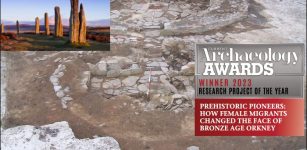 Impressive Study Highlights Female-Led Migration Into Bronze Age Orkney And Wins Prestigious Award For 2023
Archaeology | Apr 4, 2023
Impressive Study Highlights Female-Led Migration Into Bronze Age Orkney And Wins Prestigious Award For 2023
Archaeology | Apr 4, 2023 -
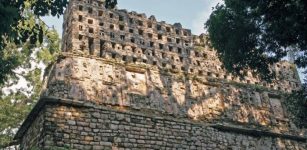 On This Day In History: Mayan King Bird Jaguar IV Assumes The Throne – On May 3, 752
News | May 3, 2016
On This Day In History: Mayan King Bird Jaguar IV Assumes The Throne – On May 3, 752
News | May 3, 2016 -
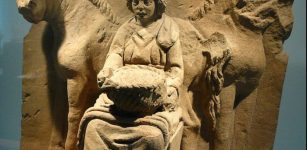 Epona – One Of The Oldest And Widely Known Celtic Deities
Celtic Mythology | Feb 26, 2018
Epona – One Of The Oldest And Widely Known Celtic Deities
Celtic Mythology | Feb 26, 2018 -
 Aboriginal Underwater Sites Off The Coast Of Australia – Discovered
Archaeology | Jul 2, 2020
Aboriginal Underwater Sites Off The Coast Of Australia – Discovered
Archaeology | Jul 2, 2020 -
 Ancient Nomads You’ve Probably Never Heard Of Disappeared From Europe 1,000 Years ago. Now, DNA Analysis Reveals How They Lived
Featured Stories | Jun 20, 2024
Ancient Nomads You’ve Probably Never Heard Of Disappeared From Europe 1,000 Years ago. Now, DNA Analysis Reveals How They Lived
Featured Stories | Jun 20, 2024 -
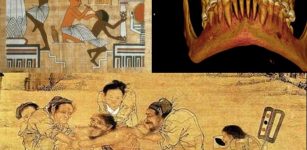 Ancient History Of Dentistry
Featured Stories | Jun 22, 2018
Ancient History Of Dentistry
Featured Stories | Jun 22, 2018 -
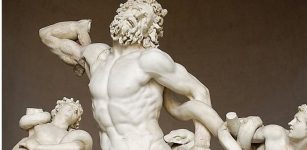 Laocoon – A Trojan Priest Who Offended The Gods And Was Strangled By Sea Serpents
Featured Stories | Nov 15, 2021
Laocoon – A Trojan Priest Who Offended The Gods And Was Strangled By Sea Serpents
Featured Stories | Nov 15, 2021 -
 Matches Were Invented In Ancient China
Ancient History Facts | Mar 7, 2019
Matches Were Invented In Ancient China
Ancient History Facts | Mar 7, 2019 -
 Armenia: Old Land Where Myths, Legends And Long History Meet
Civilizations | Apr 20, 2016
Armenia: Old Land Where Myths, Legends And Long History Meet
Civilizations | Apr 20, 2016 -
 Hermes – Divine Trickster, Psychopomp, Patron Of Merchants And Thieves In Greek Mythology
Featured Stories | Jan 15, 2019
Hermes – Divine Trickster, Psychopomp, Patron Of Merchants And Thieves In Greek Mythology
Featured Stories | Jan 15, 2019 -
 Mysterious Ancient Village In A Prehistoric Anomalous Zone – Dangerous Underground Secret – Part 2
Ancient Mysteries | Jul 28, 2020
Mysterious Ancient Village In A Prehistoric Anomalous Zone – Dangerous Underground Secret – Part 2
Ancient Mysteries | Jul 28, 2020 -
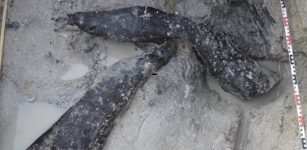 Discovery Of Half-Million-Year-Old Wooden Structure Shows We’re Wrong To Underestimate Our Ancient Relatives
Featured Stories | Oct 10, 2023
Discovery Of Half-Million-Year-Old Wooden Structure Shows We’re Wrong To Underestimate Our Ancient Relatives
Featured Stories | Oct 10, 2023 -
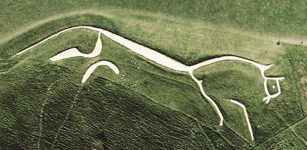 Mystery Of Prehistoric Gigantic Hill Figures Of England
Featured Stories | Sep 20, 2018
Mystery Of Prehistoric Gigantic Hill Figures Of England
Featured Stories | Sep 20, 2018 -
 Hidden Ancient Underground Tomb Discovered In Petra May Solve The Mystery Of The Nabataean Kingdom
Places | Oct 18, 2024
Hidden Ancient Underground Tomb Discovered In Petra May Solve The Mystery Of The Nabataean Kingdom
Places | Oct 18, 2024 -
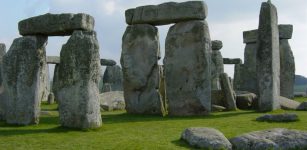 Stonehenge May Have Aligned With The Moon As Well As The Sun
Featured Stories | Jun 4, 2024
Stonehenge May Have Aligned With The Moon As Well As The Sun
Featured Stories | Jun 4, 2024

